Our long awaited, and much anticipated, new bells and carillon arrived Friday, December 15 2017 – adding an appropriate celebratory note to the end of the Reformation 500 year! And are they beautiful!
A much-appreciated and generous gift from an anonymous donor, planning and preparations for the bells began more than a year prior to their arrival. St Peter’s congregation is extremely thankful for this generous donation.
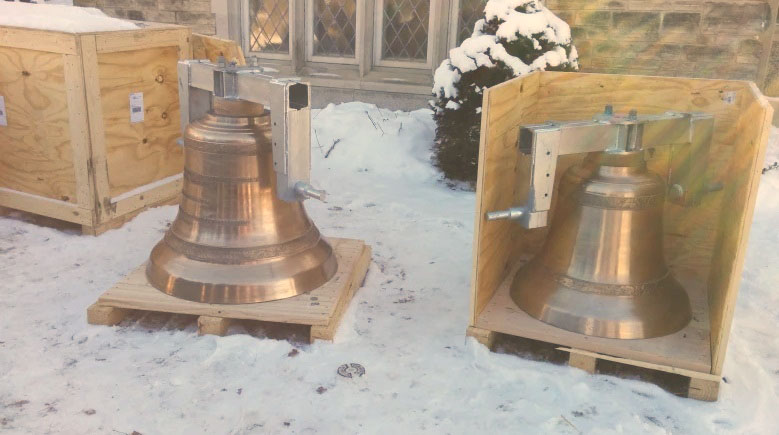 | 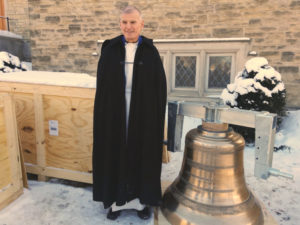 |
The three bells were blessed and named by Pastor Stan Johnstone on December 17, 2017 and were installed into the bell tower on December 19. Each bell was anointed with oil, and granted names chosen to memorialize prominent people of faith in the Church’s history, and who influence us today:
- Saint Peter, in memory of the blessed Disciple declared as an example of the rock upon which the Church stands;
- Luther, in memory of Dr. Martin Luther, Reformer;
- Bach, in memory of Johan Sebastian Bach, famed Lutheran composer of sacred music.
The Saint Peter bell is inscribed with the church’s name, the city and the Latin phrase “Soli Deo Gloria” which means “Glory to God alone”.
The bronze bells were made in the Paccard Foundry in Sévrier, France, which has been casting bells since 1796. For seven generations the Paccard foundry has been casting bells by hand, using a version of the lost-wax process. For more information on this process see The Bells of Annecy.
The Bach and Luther bells, show in the pictures below, were cast on June 15, 2017 and the St. Peter bell was cast on June 22.
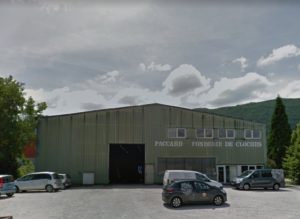 | 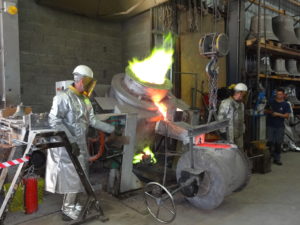 |
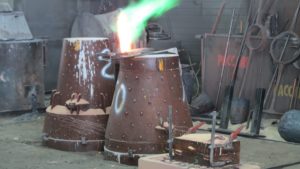 | 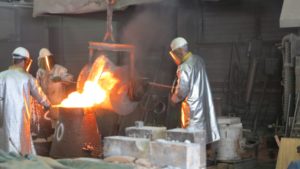 |
After the bells were cleaned and polished, they were shipped to Chime Masters in Lancaster Ohio for finishing, where the supports for swinging the bells were attached. Months prior to the installation of the bells, substantial work was done in the bell tower to support the bells and to build a stairs in the tower, making it easier for the workers. A special thank you to those church members who did this preparation.
The two smaller bells each weigh more than 500 kilograms and the largest bell alone is more than 544 kilograms (over 1/2 a ton). A large crane was needed to lift each bell over top of the bell tower and to delicately lower them through a small trap door in the roof. The Bach and Luther bells were successfully lowered into the tower first since they would be mounted on either side of the St. Peter bell.
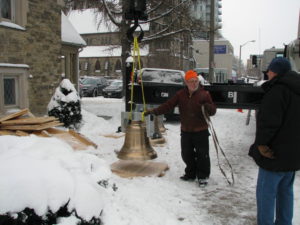 | 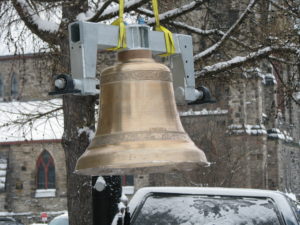 |
However with the swinging mechanism, the St. Peter bell would not fit through the trap door. So the big bell was lowered back to the ground and its swinging support was removed. Fortunately the second attempt to install the bell was successful.
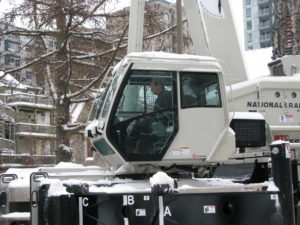 | 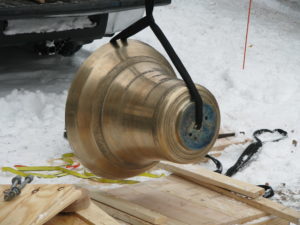 |
The electronic system installed to ring the bells can be programmed to ring any combination of the three bells at scheduled times. It would be nice for people to actually see the bells ringing but in addition to the tower climb, these bells are extremely loud. So a camera was set up in the tower and various combinations of the bells were rung.